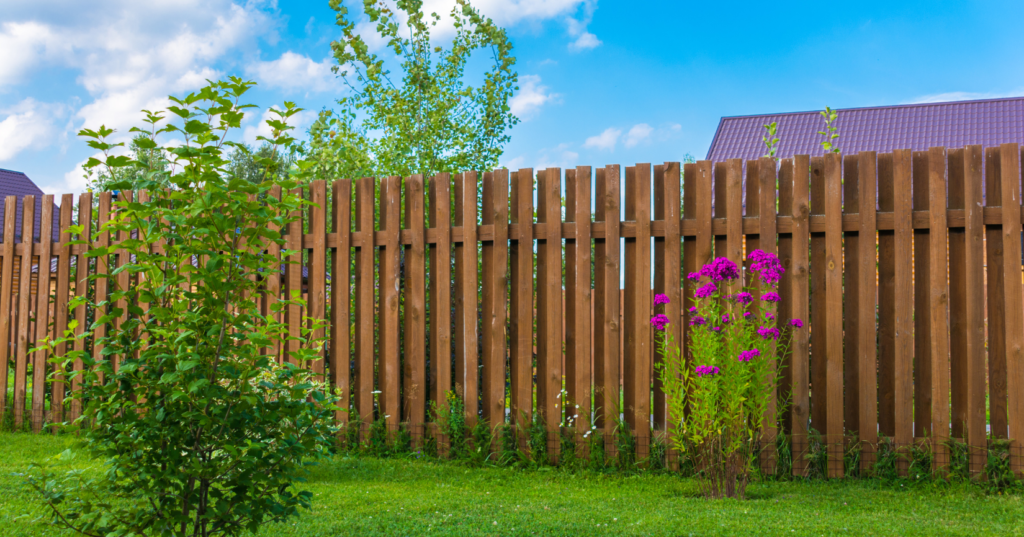Why Install a Backyard Fence?
There are numerous reasons homeowners opt to install a fence around their backyard. First and foremost, fences provide privacy. If you enjoy spending time outdoors but feel exposed to neighbors or street views, a fence can create a secluded retreat in your backyard. Additionally, fences offer security, preventing children or pets from wandering off and discouraging intruders.
A backyard fence can also add to the aesthetic value of your property, helping to create a finished and well-maintained look. With the right material and design, your fence can complement the landscaping and architecture of your home, enhancing curb appeal and potentially increasing property value. Finally, a fence can serve practical purposes, such as keeping unwanted wildlife out of your garden or marking property boundaries clearly.
Choosing the Right Fence Material
Selecting the right fence material is crucial, as it affects not only the appearance but also the durability and maintenance needs of your fence. Some common materials include wood, vinyl, metal, and composite:
- Wood is a popular choice because it has a natural look that blends well with landscaping. Cedar and redwood are durable options that resist rot and insect damage. However, wood requires regular maintenance, including staining or painting.
- Vinyl is low-maintenance, weather-resistant, and available in a wide range of styles. Though it can be more expensive upfront, its durability can make it a cost-effective choice over time.
- Metal, like aluminum or wrought iron, is incredibly durable and adds a modern touch to any yard. It’s resistant to rust and requires minimal upkeep but may lack the privacy factor unless paired with other elements like climbing plants or shrubs.
- Composite materials, made from a mix of wood fibers and plastic, offer the appearance of wood without the need for extensive maintenance. This material is eco-friendly, weather-resistant, and long-lasting.
Planning Your Backyard Fence
Once you’ve decided on the purpose and material for your fence, the planning stage begins. One of the first steps is determining your budget, as this will influence your choice of material, design, and installation method.
You should also check local regulations, as some cities and homeowner associations (HOAs) have specific guidelines for fence height, material, and placement. It’s wise to confirm your property lines to ensure the fence does not encroach on a neighbor’s property, which could lead to disputes. Consulting a professional surveyor may be helpful if property boundaries are unclear.
Another key consideration is the fence’s design. Decide whether you prefer a solid fence for maximum privacy, a picket style for a classic look, or something more ornamental, like wrought iron. Consider how high you want the fence; standard backyard fences range from 4 to 6 feet in height, though privacy fences are often taller.
DIY vs. Professional Installation
When it comes to installation, you’ll need to decide whether you’ll tackle the project yourself or hire professionals. A DIY approach can be rewarding and cost-effective if you have the right tools and skills. However, fence installation can be labor-intensive and may require permits or specific expertise, especially if the ground is uneven or if you need to set posts in concrete.
Hiring a professional fence installation service can ensure the job is done correctly and efficiently, with fewer chances of complications. Pros can handle challenging terrain, provide quality craftsmanship, and may even offer warranties on their work. While professional installation does come with added cost, it can also save you time, stress, and potential mistakes that could require future repairs.
Installation Process Overview
The installation process involves several essential steps:
- Measuring and Marking the Area: Once the fence line is marked, posts are installed at consistent intervals. Precise measurement is crucial to prevent misalignment.
- Digging Post Holes: The posts are the foundation of the fence, so they need to be set deep enough for stability. Typically, they’re placed in holes that are one-third the height of the fence.
- Setting Posts in Concrete: To ensure stability, many installers secure posts with concrete, especially for taller fences. After pouring the concrete, it’s best to let it cure for at least 24 hours.
- Attaching Rails and Panels: With the posts in place, rails are attached horizontally between posts. Panels or individual boards are then secured to the rails, creating the main structure of the fence.
- Finishing Touches: Depending on the material, the fence may need to be painted, stained, or sealed. Adding a gate, if needed, is usually one of the final steps.
Maintenance Tips for Longevity
Once installed, maintaining your fence will help extend its lifespan. Wood fences require regular sealing or staining to prevent rot, and checking for loose boards or posts periodically is advisable. Vinyl and metal fences are relatively low-maintenance but can benefit from occasional cleaning and inspections for any signs of damage.
Landscaping around the fence can also impact its longevity. Keep bushes and trees trimmed to prevent branches from rubbing against the fence, which can cause wear over time. Avoid letting soil pile up against the fence, as this can contribute to rotting in wood fences or rusting in metal fences.
Conclusion
A backyard fence can be a valuable addition to your property, offering privacy, security, and aesthetic appeal. With numerous materials and designs available, you can find an option that fits both your style and budget. Whether you choose to install it yourself or work with professionals, proper planning and maintenance will ensure that your fence remains a durable and attractive feature of your backyard for years to come.
show less

